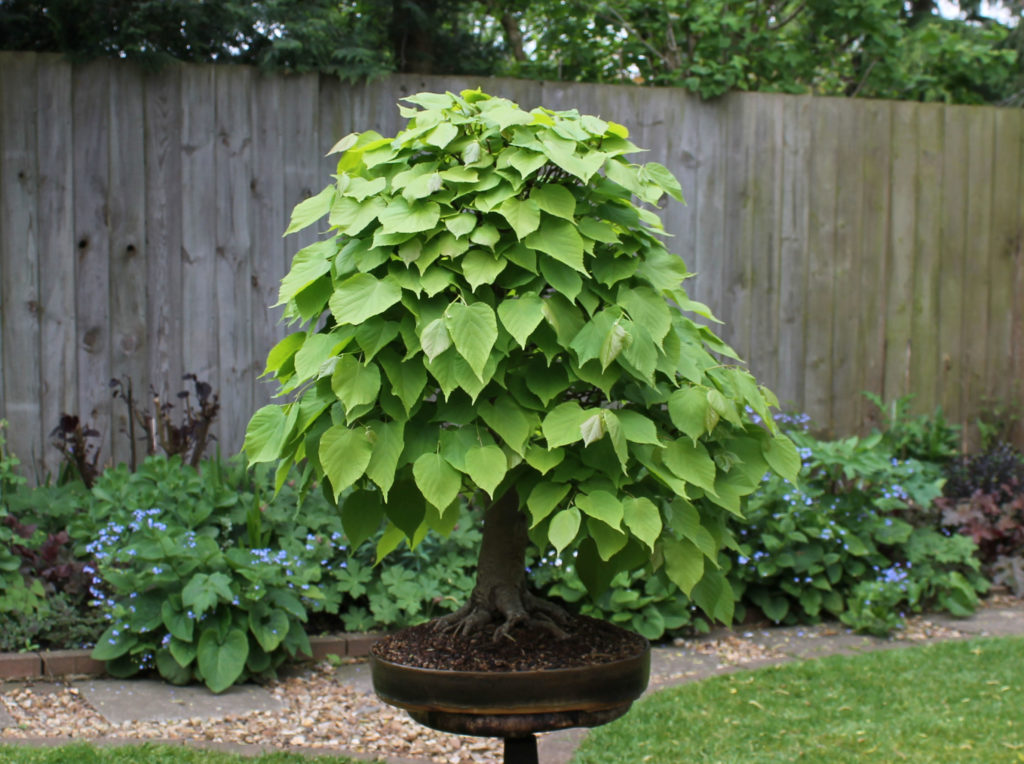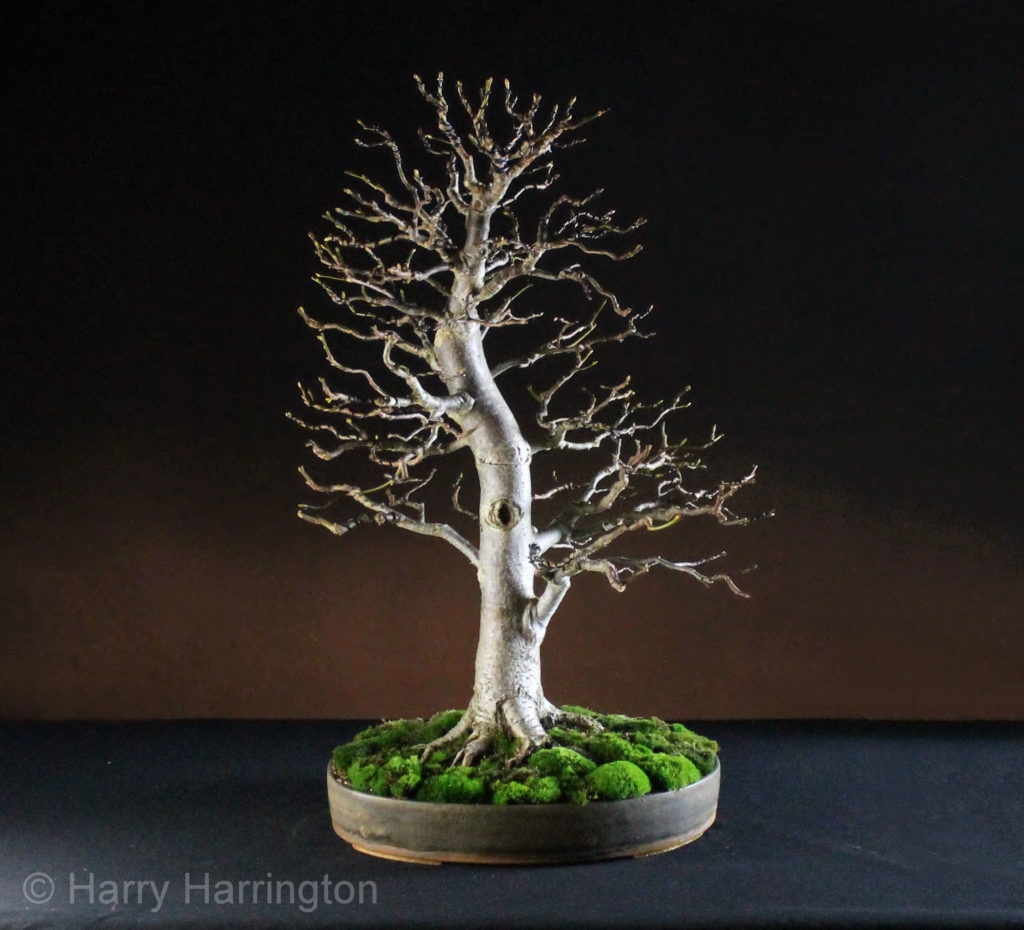
Tilia is a genus of over 20 species of deciduous trees occurring in woodland in Europe, Asia and North America. They have ovate to rounded alternate leaves which are minutely toothed. Specimens have smooth, silvery grey bark which becomes fissured with age. Tilia cordata (Small-leaved Lime) is the Tilia species commonly seen grown as bonsai, there is no reason however why other smaller leaved Tilia species such as Tilia japonica or Tilia x europaea cannot be used.
Tilia cordata, like many of the Tilia species, carries yellowish-white, scented, hermaphrodite flowers in June/July followed by dry, nut-like fruits each of which has a leaflet attached enabling seed to be dispersed on the wind.
BONSAI CULTIVATION NOTES
POSITION: Full sun or partial shade. Protect from winter temperatures below -10°C.
FEEDING: Every two weeks during the growing season. Tilia prefer a very slightly acidic soil and on a long-term basis will begin to suffer from the effects of lime in hard water unless given an occasional dose of ericaceous fertiliser.
REPOTTING: Every one to two years in Spring as buds extend, using a basic soil mix.
PRUNING: Hard prune during late Winter or early Spring. During the growing season trim back to shape continually, shoots can regrow within 3 or 4 weeks of each pruning. With sufficient feeding, branches can be regrown 3-5 times in a year. Stop pruning at the end of August to allow new shoots enough time to harden up for winter. Leaf-cutting can be carried out on developed bonsai in May or June which will improve branch ramification and reduce leaf-size.
WIRING: Wiring can be carried out at anytime of the growing season or in dormancy. The bark is very sensitive and marks easily however, slight wire marks will disappear quickly. Limes heal remarkably quickly after trunk chopping or branch removal. Heavy pruning scars made during the growing season can lead to unsightly bulges from excessive scar tissue production, this can be pared down using a sharp knife as necessary.
PROPAGATION: Stratify seed for 3-5 months and sow outside in Spring, or sow outside as soon as ripe in Autumn. Ripewood cuttings in late-summer.
PESTS AND DISEASES: Susceptible to root-rot, gall mites on leaves, scale insects and aphids.
STYLING: Suitable for all forms except Literati though the Informal Broom form best reflects the tree’s natural habit. Suitable for larger sized bonsai.


